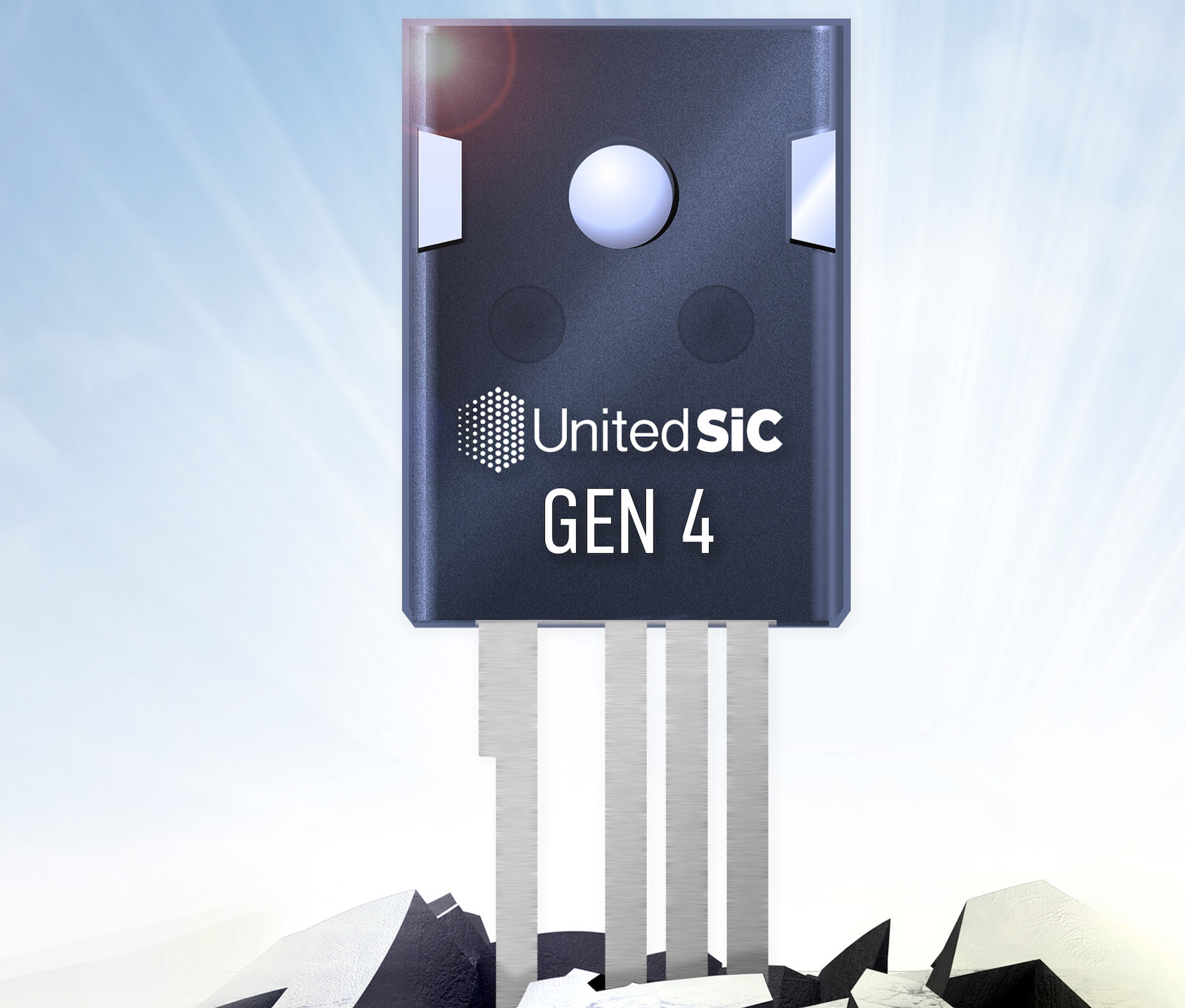UnitedSiC introduces new SiC FETs on Gen 4 technology

Industry’s first 750V devices set performance benchmarks for high-growth power applications
UnitedSiC, a US manufacturer of SiC power semiconductors, has launched the first four devices based on its advanced Gen 4 SiC FET technology platform. As the first and only 750V SiC FETs currently available on the market, these Gen 4 devices enable new performance levels, based on high Figures of Merit (FoM), that benefit power applications across automotive, industrial charging, telecom rectifiers, datacenter PFC, and DC-DC conversion as well as renewable energy and energy storage.
Available in 18 and 60 mohm options, these new SiC FETs deliver unmatched FoMs with reduced on-resistance per unit area, and low intrinsic capacitance. In hard-switching applications, the Gen 4 FETs exhibit the lowest RDS(on) x EOSS (mohm-uJ) resulting in lower turn-on and turn-off loss. In soft-switching applications, their low RDS(on) x Coss(tr) (mohm-nF) specification provides lower conduction loss and higher frequency.
According to the company, these devices not only surpass existing competitive SiC MOSFET performance whether running cool (25degC) or hot (125degC), but also offer the lowest integral diode VF with excellent reverse recovery delivering low dead-time losses and increased efficiency.
In expanding UnitedSiC’s offering to 750V, the new devices offer more designer headroom and reduced design constraints. This higher VDS rating also makes these FETs beneficial for 400/500V bus voltage applications. With a widely compatible gate drive of +/-20V, 5V Vth, all devices can be driven with 0 to +12V gate voltages. This means they work with existing SiC MOSFET, Si IGBTs and Si MOSFET gate drivers.
As Anup Bhalla, VP Engineering at UnitedSiC, explains: “These devices help address the challenges facing engineers working across sectors with the highest voltage and power demands - from DC-DC conversion and on-board charging to power factor correction and solar inverters.
“We will be announcing many new Gen 4 devices over the next 9 months which will further improve on cost-effectiveness, heat efficiency and design headroom. This will support all sectors in overcoming the challenges of mass adoption and to accelerate innovation.”


































